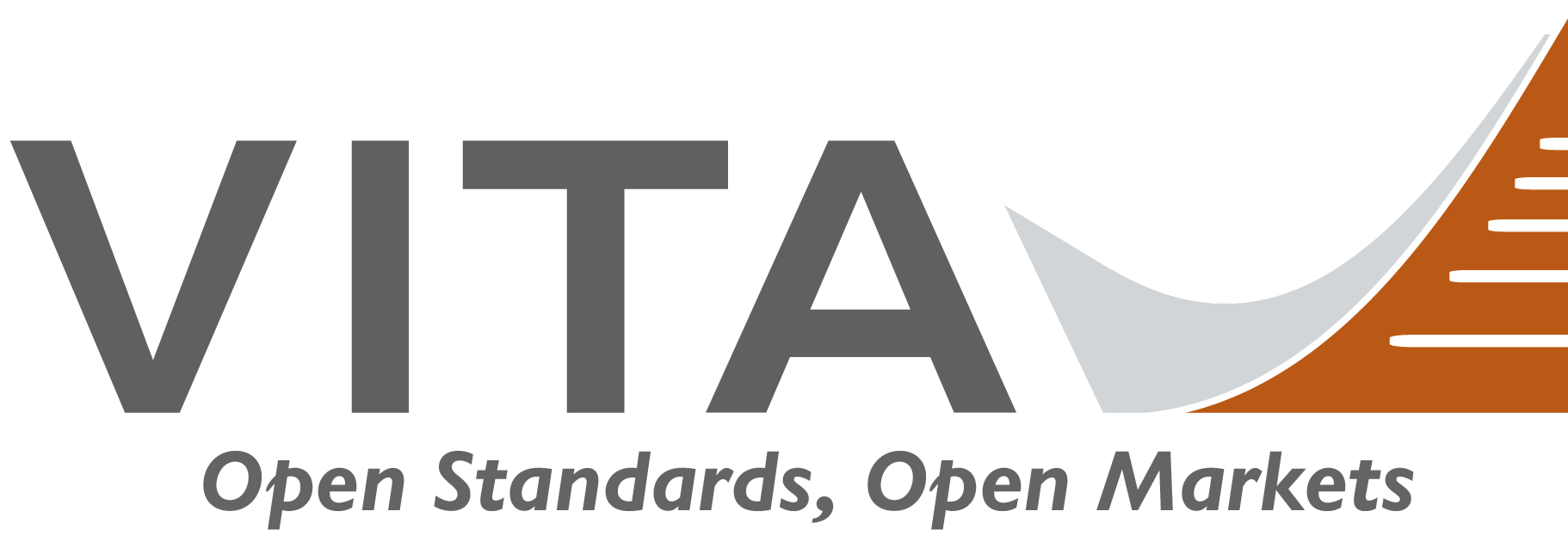VITA 90-VNX+ improves the performance and enhances the ecosystem of the VNX family of technology in small form factor environments. We asked some VITA community members:
VITA 90-VNX+: What does the ecosystem look like in 2025 and what are the expectations, as you see it?
From: Patrick Collier, Sr. Open Systems Engineer, Aspen Consulting Group
The interest in small form factor in general seems to be growing as we proceed through standards development. There is a growing need for these types of solutions for a variety of system level and building block level use cases. This variety of cases covers a full spectrum of implementations. Both terrestrially and in space. A great many also see a large benefit in following a similar standards path as VPX. The creation of product line architectures at multiple levels is the future. The ecosystem by 2025 should be see maturity in the first instances of these use cases and implementations developed in 2023 and 2024. An expectation is full use of small form factor by the end of the decade.
through standards development. There is a growing need for these types of solutions for a variety of system level and building block level use cases. This variety of cases covers a full spectrum of implementations. Both terrestrially and in space. A great many also see a large benefit in following a similar standards path as VPX. The creation of product line architectures at multiple levels is the future. The ecosystem by 2025 should be see maturity in the first instances of these use cases and implementations developed in 2023 and 2024. An expectation is full use of small form factor by the end of the decade.
From: Mark Littlefield, Systems Product Director, Elma Electronic
Today VITA 90/VNX+ is in its nascent stage…just really getting started. The standards documents are progressing well but aren’t yet complete, and organizations are just starting their first products and projects against the standard. We can expect those first-generation products to be announced and shipping before the end of the year, which means that the first integration projects using those components will be firmly underway in the late-2023 and early 2024 period. However, today most people are just “kicking the tires”, checking VNX+ out and thinking about what they might be able to use it for.
standards documents are progressing well but aren’t yet complete, and organizations are just starting their first products and projects against the standard. We can expect those first-generation products to be announced and shipping before the end of the year, which means that the first integration projects using those components will be firmly underway in the late-2023 and early 2024 period. However, today most people are just “kicking the tires”, checking VNX+ out and thinking about what they might be able to use it for.
In addition, the VITA 93 Small Form Factor Mezzanine (SFFm) is a key component of the VNX+ infrastructure. It will need to be completed and released before the end of the year to help the VNX+ market grow.
If components of the various major groups – SBCs, switches, radios/receivers, FPGA processors, GPU/video processing, and backplanes – all get launched/announced by mid-2024, then we can expect relatively healthy adoption through the 2024/2025 period. By 2025 early projects should be heading towards full production, so sales of VNX+ components should start to rise quickly and new product introductions should accelerate.
There are several assumptions baked into all the above. For VNX+ to have true long-term success several things will need to happen:
- There is an expectation that VNX+ plug-in cards will be “affordable” – more so than VPX. This is a reasonable expectation because the VNX+ power densities (usually less than 25W per slot) means lower-performance (meaning less expensive) components will be used. In addition there is an expectation of higher volumes for VNX+. If this does not happen, or if the price points are not “low enough”, the market will not grow as fast as we anticipate. Lower costs will feed higher volumes, which, in turn, will feed even lower costs (and so on).
- The power densities we are expecting are based on initial thermal models. There is still a lot of work to do here in both modeling and design of thermal structures within the VNX+ plug-in cards, as well as enclosures and chassis. If unexpected problems arise and we cannot meet or exceed our initial estimates, then the market will likely suffer.
- Lastly, it is expected that VNX+ will be adopted into applications that, today, are served by custom hardware and have fairly high volumes, and there is pretty good data to justify that expectation. If that does not come to pass, the growth curve of VNX+ will suffer.
So, in summary, my expectations for VNX+ in 2025 is quite high, but there are still several barriers to cross before we can achieve that…the standards documents need to be completed, there needs to be some solid product announcements and shipments in 2023, and we need to hit our price and thermal density targets. If that is all achieved, then I think we can secure those high-volume today-custom applications, and we can hit the growth curve (and subsequent price reductions) that everyone wants to see.
From: Andy Walker, Associate Director in the Advanced Technology & Concepts, Collins Aerospace
I see the VNX+ market moving very rapidly into wide range of applications, wider than previous MOSAs. Traditional MOSA markets like weapons, advanced sensors, and communications systems will be first to market but followed by nontraditional MOSA markets in commercial segments like manned and unmanned space, aviation and automotive. Further, multifunction systems, ones that share backend processing with a variety of different sensor front ends, will be extended down to small form factors to further reduce system Size/Weight/Power/Cost (SWAP-C). This linkage will enable upgradeable and interoperable electronics that OEMs will gravitate towards to avoid obsolescence over ever-decreasing update time frames.
than previous MOSAs. Traditional MOSA markets like weapons, advanced sensors, and communications systems will be first to market but followed by nontraditional MOSA markets in commercial segments like manned and unmanned space, aviation and automotive. Further, multifunction systems, ones that share backend processing with a variety of different sensor front ends, will be extended down to small form factors to further reduce system Size/Weight/Power/Cost (SWAP-C). This linkage will enable upgradeable and interoperable electronics that OEMs will gravitate towards to avoid obsolescence over ever-decreasing update time frames.
The primary enabler allowing VNX+ to penetrate commercial markets comes down to cost. To modularize the electronics for small form factor applications, cost will have to be much lower than other MOSA approaches. The development cost will need to be recouped over quantity and that will provide the initiative to push the solutions into Air Transport aircraft, utility ground vehicles, and commercial space down to CubeSats.
Today, systems are available that provide a wide range of compute from microcontrollers to ARM and x64 microprocessors, along with ancillary capabilities like power supplies, ethernet switches, chassis, backplanes and IO transitions. In the next 2 years, software defined radios, Field Programmable Gate Array (FPGA) and System on Chip (SoC) modules and military-oriented advanced sensing capabilities will be available. High reliability modules for space processing will also be available. In 5+ years, these capabilities will enhance and then replace commercial systems as reliability improves and cost comes down.
From: William Ripley, Standards Development Engineer, Samtec
At the present time, the VITA 90 Family of Standards are nearing completion. To minimize confusion in the VNX+ integrator community, VITA elected to release all the essential standards at the same time. Currently the VITA 90 committee is on track to release VITA 90.0 (Base Standard), VITA 90.1 (Module Profiles), VITA 90.2 (Coaxial and Optical I/O), and VITA 90.3 (Power Filtering, Conversion, and Energy Storage) by the end of 2023. Soon after the release of these essential standards, VITA 90.4 (Advanced Cooling & Retention) and VITA 90.5 (SpaceVNX+) will be released. Shortly after VITA release, the standards will be submitted to ANSI for ratification and joint publication.
minimize confusion in the VNX+ integrator community, VITA elected to release all the essential standards at the same time. Currently the VITA 90 committee is on track to release VITA 90.0 (Base Standard), VITA 90.1 (Module Profiles), VITA 90.2 (Coaxial and Optical I/O), and VITA 90.3 (Power Filtering, Conversion, and Energy Storage) by the end of 2023. Soon after the release of these essential standards, VITA 90.4 (Advanced Cooling & Retention) and VITA 90.5 (SpaceVNX+) will be released. Shortly after VITA release, the standards will be submitted to ANSI for ratification and joint publication.
Several manufacturers and integrators which participate in the VNX+ standard development process have moved out in advance of publication to build VNX+ modules and systems based on VITA 74 VNX or OpenVPX designs, as well as beginning “ground up” VNX+ designs.
Currently, Samtec is rolling out the new VNX+ Aperture Connector Blocks, including the requisite Coaxial RF/Video Contacts and Optical MT Ferrules. Trident Infosol has announced a new VNX+ GPU/GPGPU module based on the NVIDIA Xavier platform. Additionally, they have made deliveries of several new VNX+ Raptor systems consisting of either a development or deployable chassis, a backplane with power supply, Intel Core & Atom CPU, NVIDIA GPU, Switch, and IO/Storage Carrier modules. Collins is developing advanced MPSoC Signal Processing modules for use in airborne and space applications. Ideas-Tek and Antara Teknik are developing hardware for CubeSAT and other space applications. Elma is developing chassis and system products, and Wolf has announced new VNX+ Video Frame Grabber CODEC and Compression modules. Acromag and Technobox are developing carriers and I/O mezzanine modules based on a new Small Form Factor mezzanine module standard currently in development. Other companies are bringing advanced cooling technologies to VNX+ modules and systems, utilizing state-of-the-art Oscillating Heat Pipe and Air Flow-through techniques. The Open Group’s SOSA Consortium has selected VNX+ as its Small Form Factor standard, and the content for that standard is being developed and published.
As we progress in 2023, a growing number of companies will continue to develop, test, and deliver prototype hardware for both airborne avionic and sensor-pod applications, largely based on CPU & GPU compute platforms. In 2024, much of the hardware released in 2023 will complete qualification testing, and the new VNX+ suppliers will start releasing their designs which will include Ethernet Switch, CP/DP Switch, Chassis Management, MPSoC, and FPGA Modules. By 2025, it is expected that new RFSoC, SDR, and Inertial Measurement and Navigation hardware will debut, and many of the programs started in 2023 and 2024 will go to production.
